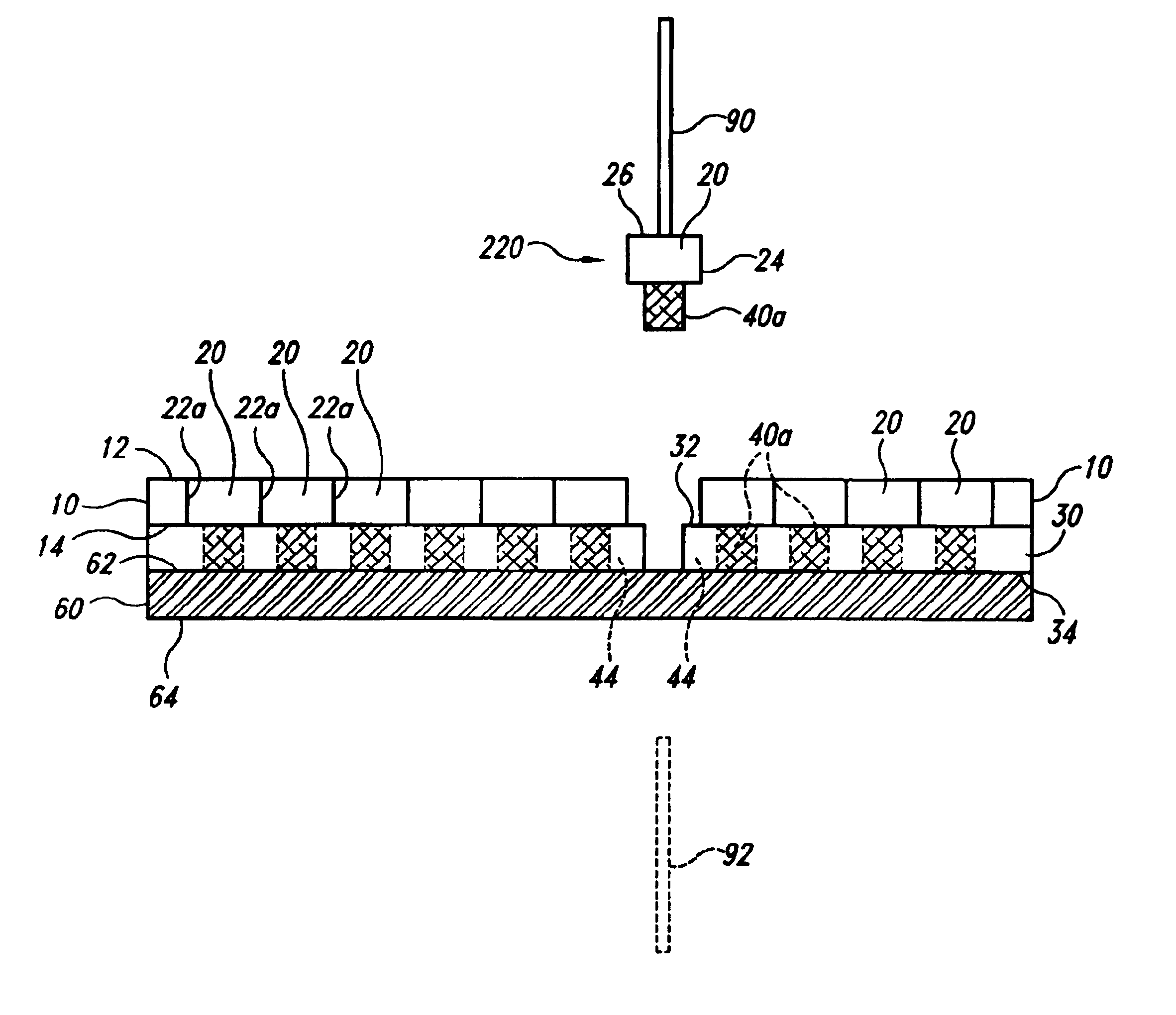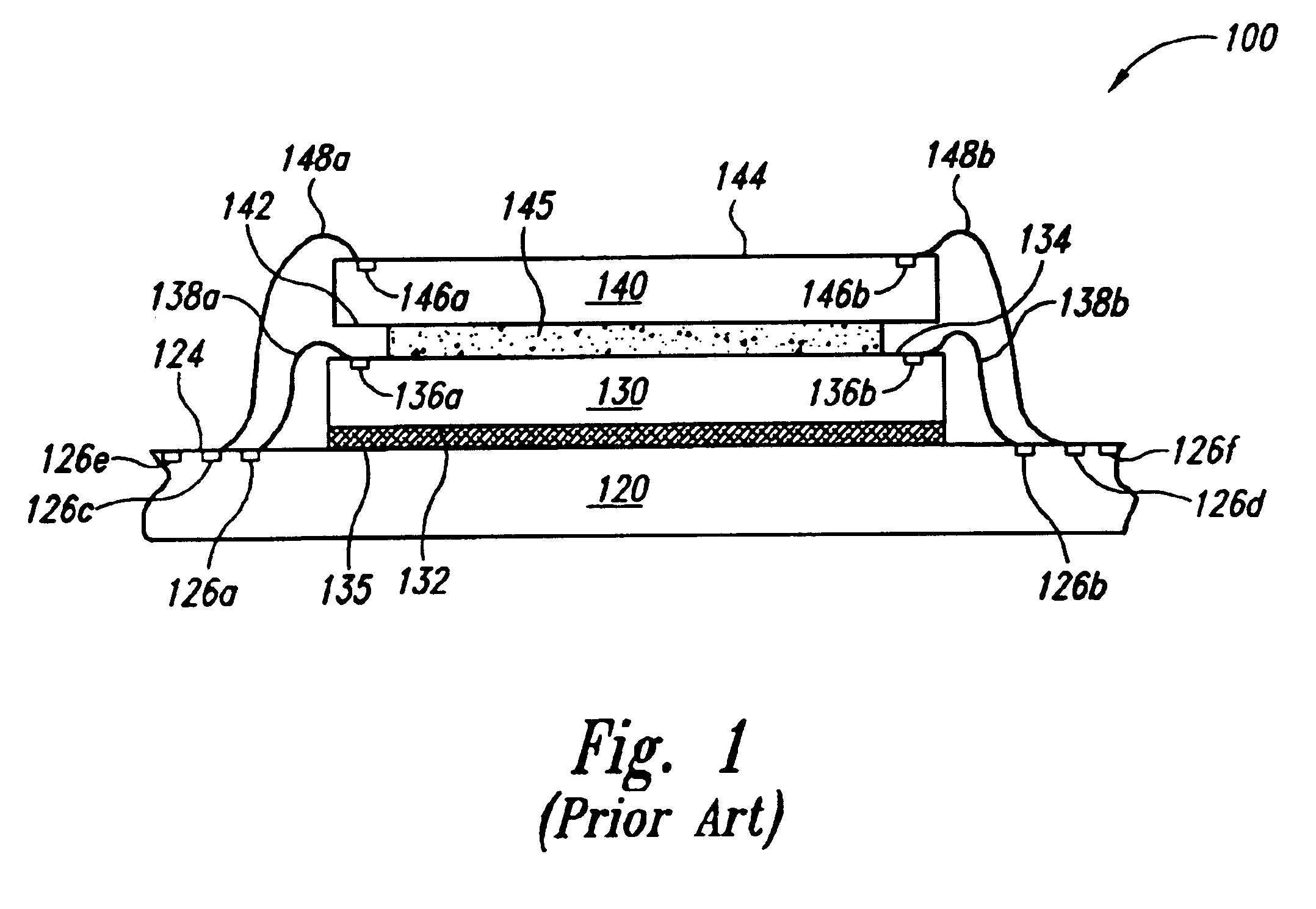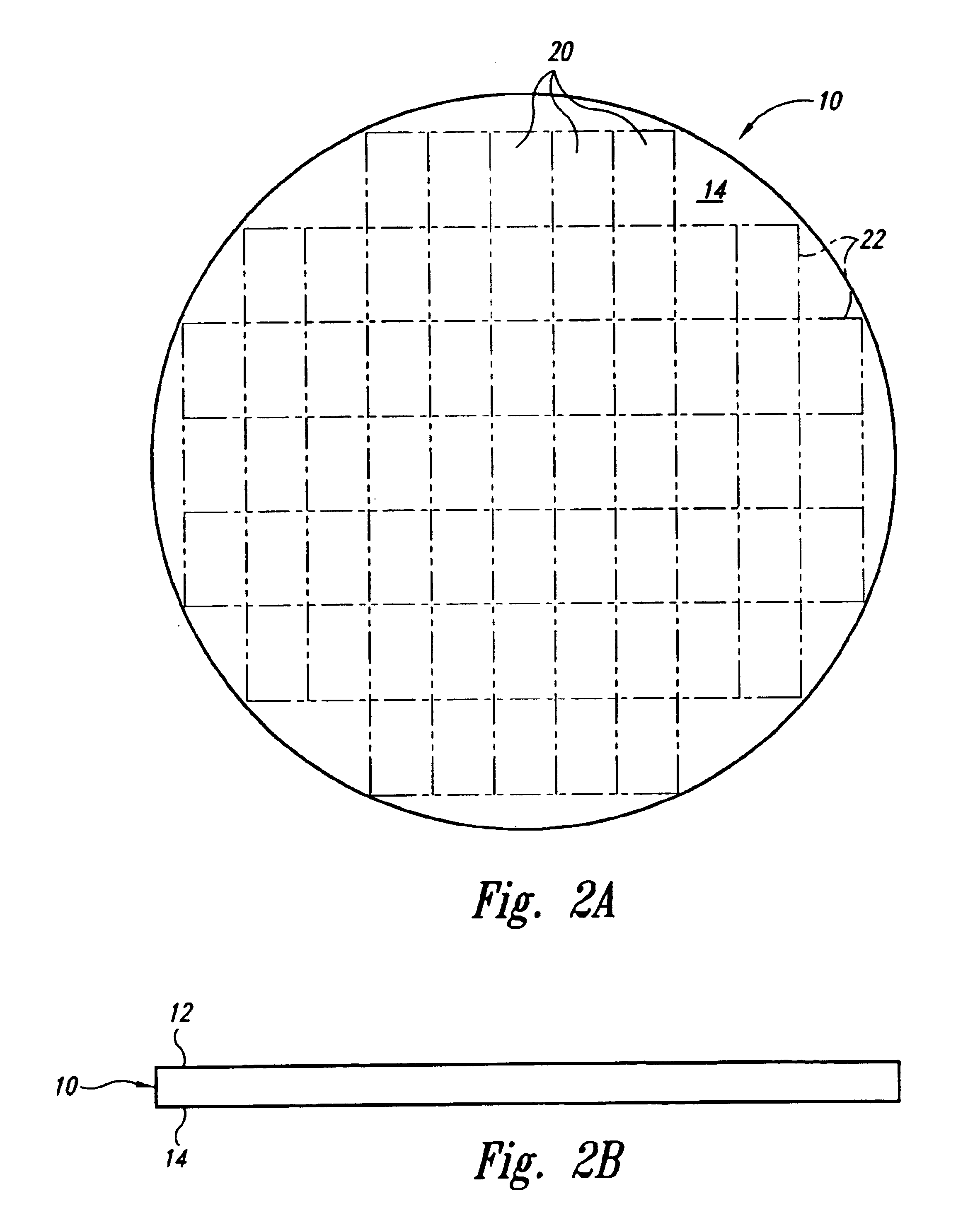Fabrication of stacked microelectronic devices
a technology of microelectronic components and stacked components, which is applied in the direction of layered products, transportation and packaging, chemistry apparatus and processes, etc., can solve the problems of presenting manufacturing difficulties, limiting the density of the integrated circuit, and limiting the attachment of the second microelectronic component to the first microelectronic componen
- Summary
- Abstract
- Description
- Claims
- Application Information
AI Technical Summary
Benefits of technology
Problems solved by technology
Method used
Image
Examples
Embodiment Construction
[0021]Various embodiments of the present invention provide methods of manufacturing stacked microelectronic devices and subassemblies useful in such manufacture. The following description provides specific details of certain embodiments of the invention illustrated in the drawings to provide a thorough understanding of those embodiments. It should be recognized, however, that the present invention can be reflected in additional embodiments and the invention may be practiced without some of the details in the following description.
[0022]FIG. 2A illustrates a microelectronic wafer 10 having an active surface 12 and a rear surface 14. The wafer 10 may comprise a plurality of microelectronic components 20. For example, the wafer 10 may comprise a semiconductor wafer and each of the microelectronic components 20 may comprise a semiconductor die. Such semiconductor wafers are commonly manufactured as 200 mm or 300 mm discs with a plurality of semiconductor dies arranged in an array on the...
PUM
| Property | Measurement | Unit |
|---|---|---|
| thickness | aaaaa | aaaaa |
| thickness | aaaaa | aaaaa |
| adhesive | aaaaa | aaaaa |
Abstract
Description
Claims
Application Information
 Login to View More
Login to View More - R&D
- Intellectual Property
- Life Sciences
- Materials
- Tech Scout
- Unparalleled Data Quality
- Higher Quality Content
- 60% Fewer Hallucinations
Browse by: Latest US Patents, China's latest patents, Technical Efficacy Thesaurus, Application Domain, Technology Topic, Popular Technical Reports.
© 2025 PatSnap. All rights reserved.Legal|Privacy policy|Modern Slavery Act Transparency Statement|Sitemap|About US| Contact US: help@patsnap.com



